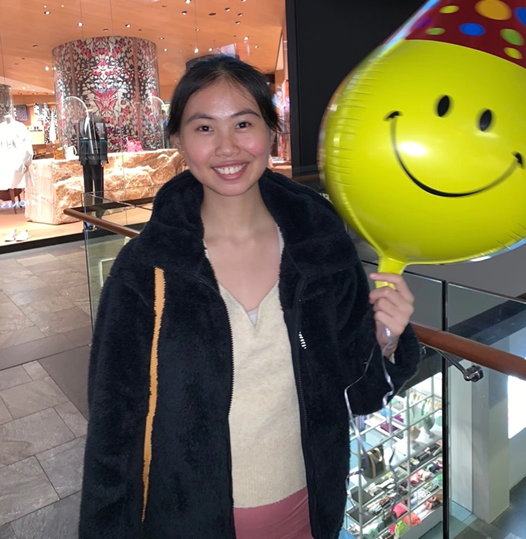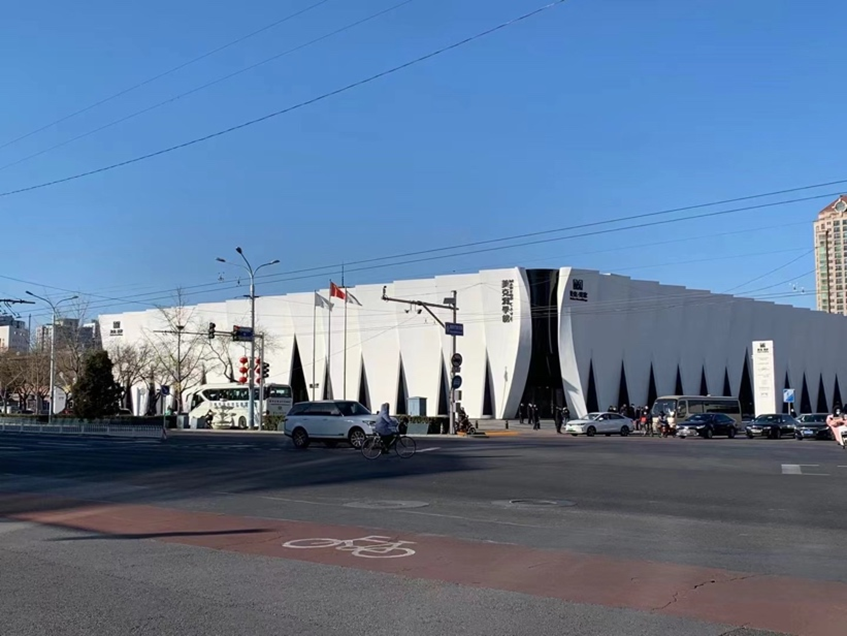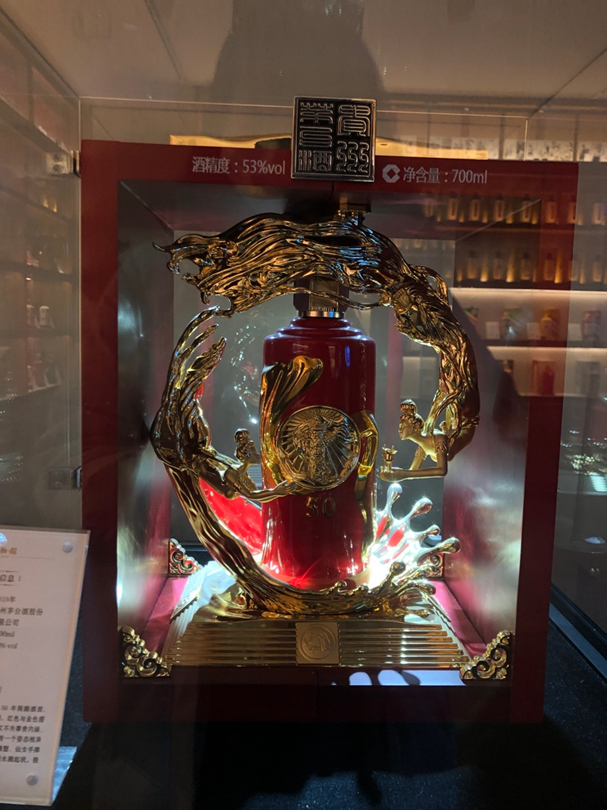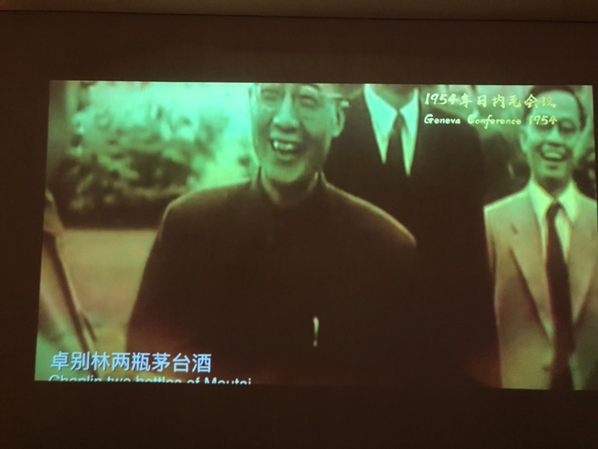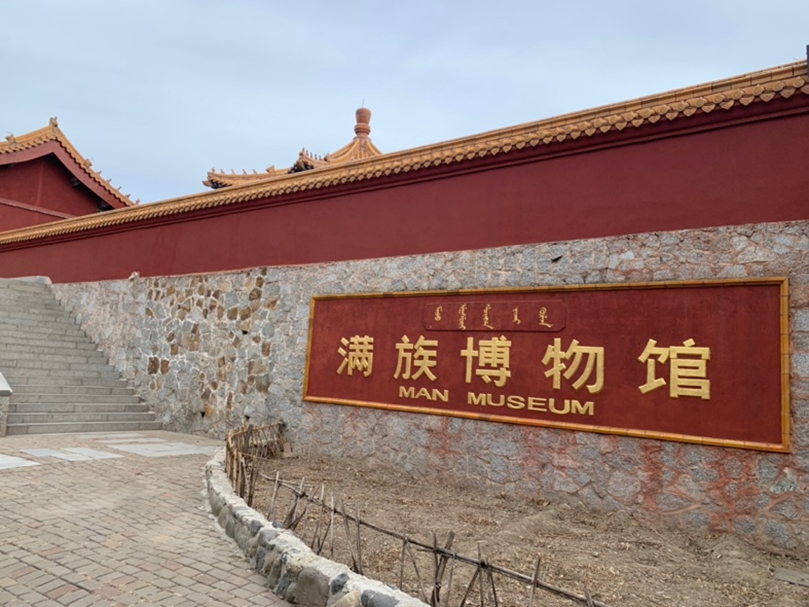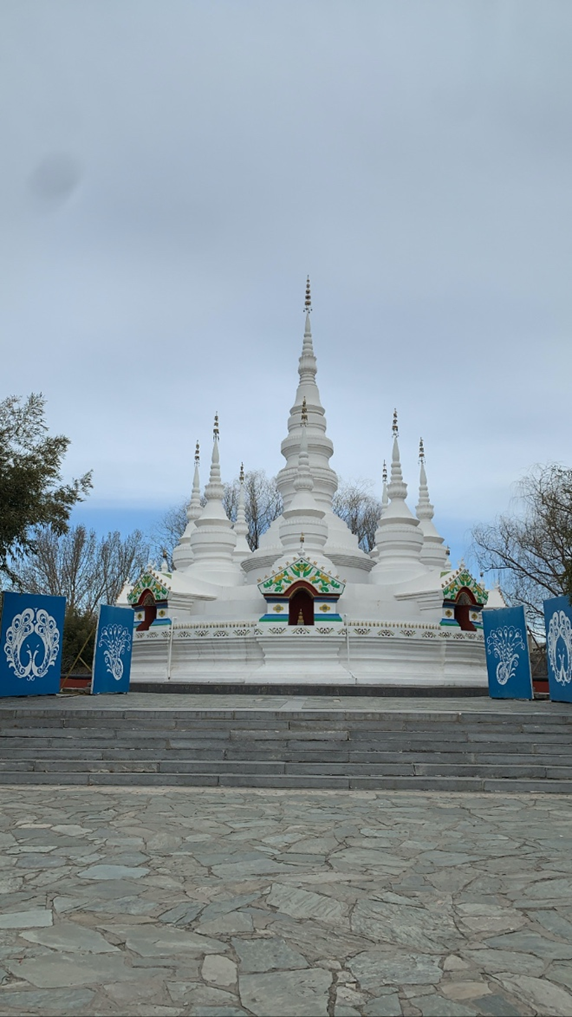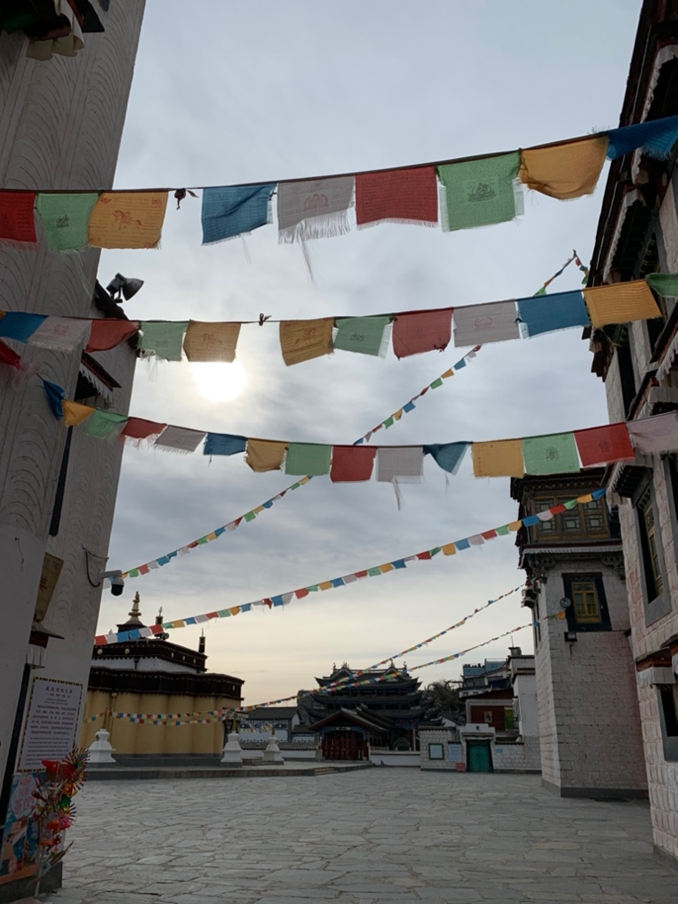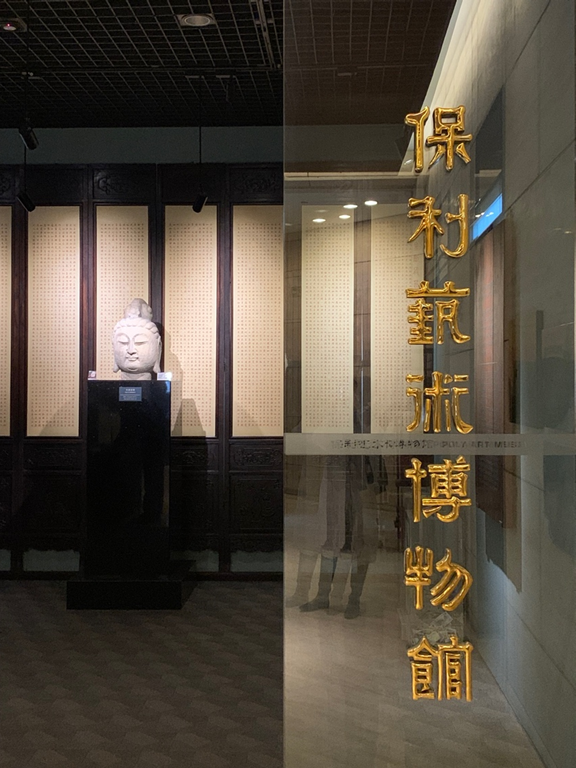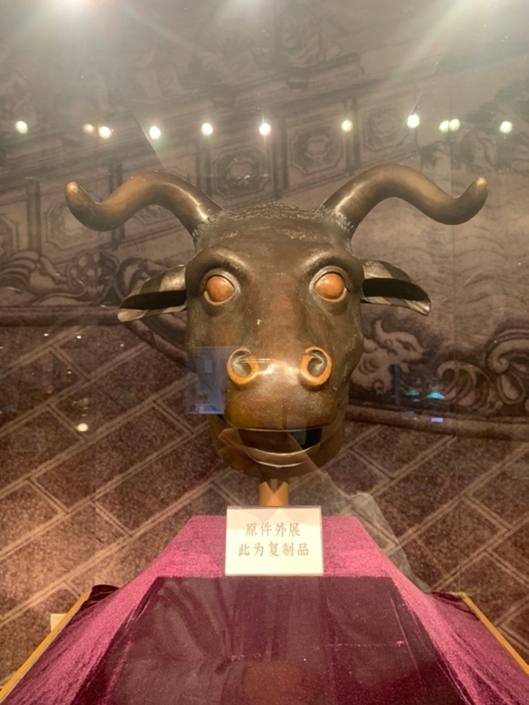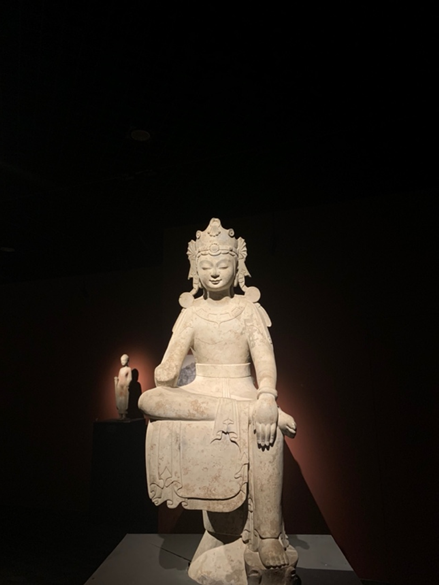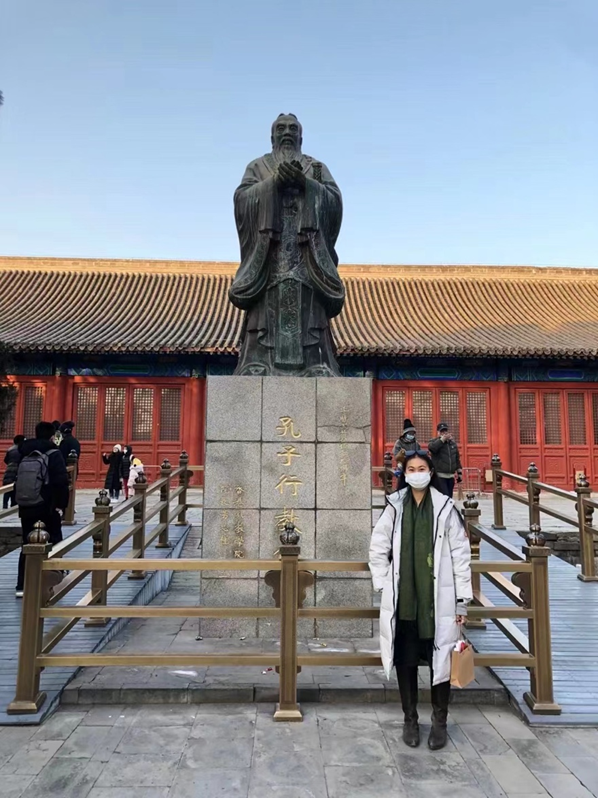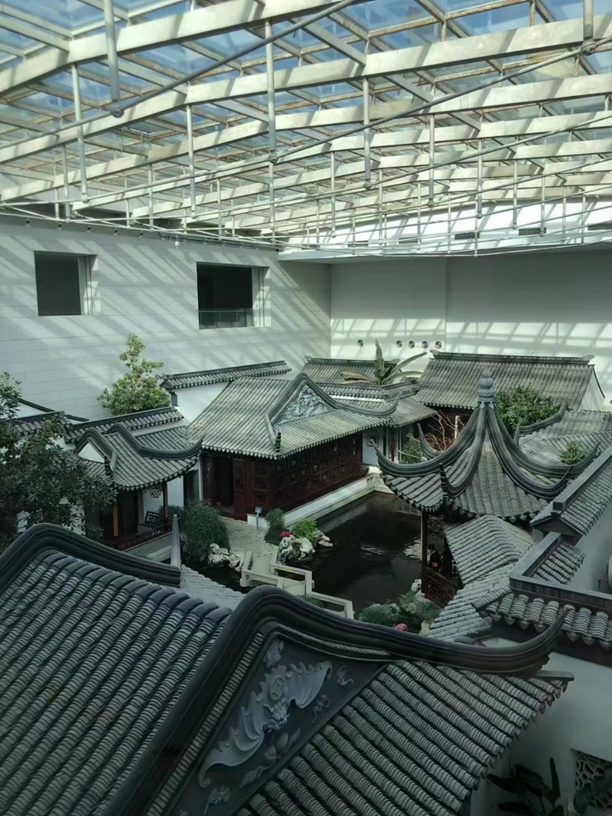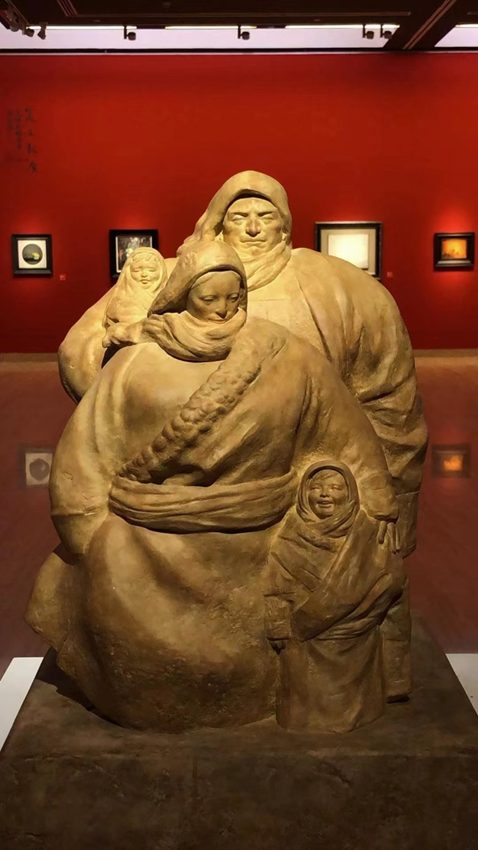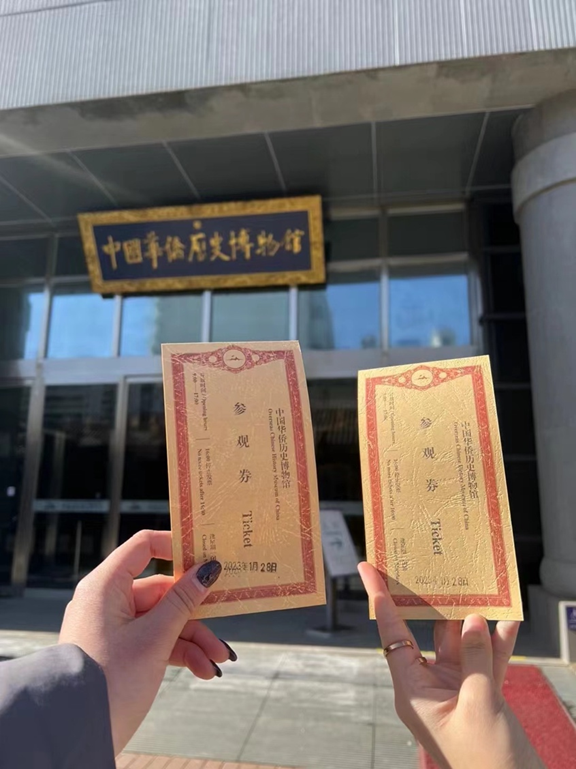Editor’s note: This year marks the 125th anniversary of Peking University, and it is also designated as PKU's Global Engagement Year. To commemorate this special occasion, PKU News is publishing a series of articles that feature the fascinating and unforgettable accounts of its international students studying and living in China. From northeast China's Jilin Province to the panda-abundant southwest China's Sichuan Province, as well as the bustling capital city of Beijing — Peking University's diverse student body from around the world is eager to share and showcase their journeys and experiences in China. In the following piece, please follow Vissly Chan’s journey through a cluster of museums in Beijing during her winter break to witness what those museums, the crystallization of time, have to offer.
By Vissly Chan
If one were to ask an 8-year-old or 18-year-old Vissly on how she would like to spend her holidays, a museum visit would not be on her bucket list at all. A museum excursion was something that she had often found boring and would end up ‘touring’ the entire museum within 15 minutes. Yet, over the past winter break, she went to 28 museums in total – visiting one museum every day. With every museum visit, she takes a mirror selfie as a way of checking off her museum bucket list! Let’s dive into her museum-hopping journey!
A mirror selfie taken in the Geological Museum of China
How it all started
Due to changes in the epidemic situation as well as due to the winter holidays, many of my peers left Beijing one by one. For a long period of time, I saw at least two photos of airports or of train stations appearing in my WeChat Moments (a social media application) every day.
As I was helping my friend to take care of her e-bike, out of responsibility, I stayed in Beijing for the entire period but I was certain I wanted to make the most out of my winter break and do something different – something I would not have done in the past.
The first “museum” I’ve been to is the Markor C.A.V.E, which was very attractive by its architecture (putting ‘museum’ in inverted commas as it’s more akin to an art gallery that houses paintings and calligraphy works).
Despite being intrigued by the futuristic interior aesthetics and edgy exterior architecture, it’s still mainly a home-furnishing retail space with only a handful of art pieces and that was when I knew I was looking for something more informative, different and theme-targeted – a museum.
I went on to log onto the Xiaohongshu, a popular lifestyle-sharing and purchasing decision-making platform, and came across an unofficial statistic that Beijing is home to over 200 museums. It struck me that there was so much to explore in Beijing alone and that was when I started my museum hunting and hopping journey.
Here are three museums that left the greatest impression and why:
I. Moutai Museum(茅台博物馆)
A very unique museum theme and the museum I get asked about the most too, especially on whether they gave visitors a free Moutai sip (unfortunately, the answer is no). Moutai is arguably the most representative of the Chinese alcohol culture which I was very curious about. The museum is not big, but they exhibited very limited edition Moutai bottles,
counterfeit Moutai in the market (and tips on how to distinguish them), Moutai’s history, the process of making Moutai as well as how Moutai is “blended” into diplomacy!
Exquisite Moutai bottles
Documentary showing the “Moutai Diplomacy”
II. China Ethnic Museum(中华民族博物院)
This museum shows you the sights of the traditional heritage of the 56 ethnicities of China, without physically leaving Beijing. This museum park is huge and is great for exploring minority ethnicities in China and even just for taking great pictures! The sights were beyond impressive and magnificent.
III. Poly Art Musuem(保利艺术博物馆)
When I knew Poly operates an art museum, I immediately reserved a date for it. The Poly Group is the state-owned enterprise that auctioned back four of the 12 famous bronze animal head sculptures in the Old Summer Palace, which made me very curious about their art collections and the other pieces their museum curates.
Poly Art Museum’s entrance
The museum can be loosely split into 3 sections: first, a dimly-lit section that exhibits the Buddhism pieces; second, the main area that exhibits a couple of artifacts from nearly every dynasty; and third, the zodiac heads replicas section.
Replica of the bronze ox head
The unique part of this museum is that in the first section, they did not install any blockade or a ‘red line’ per se, there is only one security personnel there to make sure you don’t touch the artifacts but otherwise, you’re free to look at the pieces very closely!
Greatest takeaways
One subject in my A-Levels (Singapore’s university entrance exam) is the General Paper where a commonly asked question to write an essay on is whether we think there is room for museums in the modern society. This question is something I have a propensity to avoid as I was never a museum person in the past; I did not have enough of a perspective to substantiate on why museums should be preserved. However, having visited 28 museums, I did find my answer along the way.
Vissly in the Confucian Temple and Guozijian Museum
The pieces museums exhibit and the information they display make you appreciate the humanities more, cultivate your ‘vibe’ and elevate your sense of aesthetics. It serves as an indispensable mind ‘food’ and a way of escape that cannot be obtained otherwise else.
Photo taken in the China Arts and Crafts Museum
Photo taken in the Museum of Chinese Gardens and Landscape Architecture
Taken in the National Art Museum of China
Quick Q&A
Q1: 3 words describing your winter break
Refreshing, revitalizing, new
Q2: If you could only recommend one museum, which would you pick?
A super hard decision but maybe the China Ethnic Museum!
Q3: Any museum that you did not visit but you wish you did?
Quite a few museums on my bucket list weren’t operating during the winter break sadly, but to narrow and name just three – the China Court Museum(中国法院博物馆), Beijing Ancient Architecture Museum(北京古代建筑博物馆)and the China Aviation Museum(中国航空博物馆)
Q4: Any must-brings or must-dos when visiting museums?
Bring your student ID, passport, and water! Around a week before the intended visit, always check if you need to make reservations (many museums don’t accept walk-ins); a day before the visit, have a good rest; during the visit, keep an open mind!
Q5: How did you pick which museum to visit?
When I get asked for a recommendation, I normally enquire about their museum interest (Humanities/Arts/Architecture/Science, etc) and preferences (less crowded/quiet or they’re fine with a ruckus) before recommending. Inter alia, I have broad interests but I concentrate better in a quiet atmosphere.
Q6: Other than visiting museums, what else did you do?
Getting to know new people, lots of swimming and writing this article :-D
Vissly before her regular swim session
Vissly visiting the Overseas Chinese History Museum of China with a friend
*Vissly Chan is a sophomore at PKU’s School of Government; she hails from Singapore
Edited by: Dennis Meng
Pictured by: Vissly Chan
